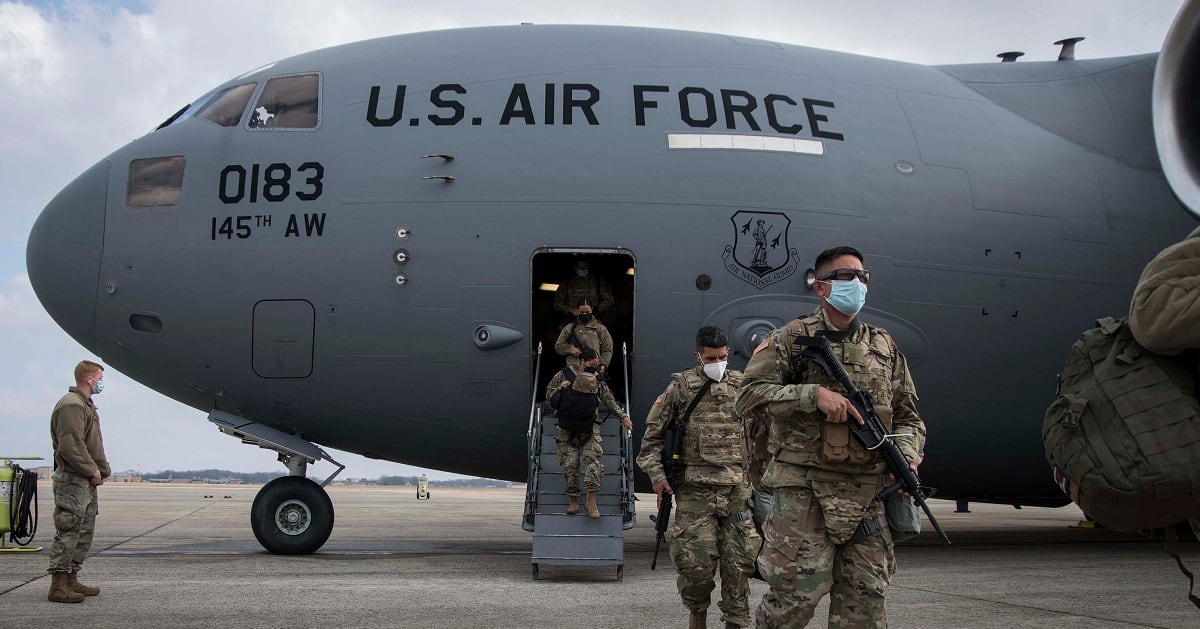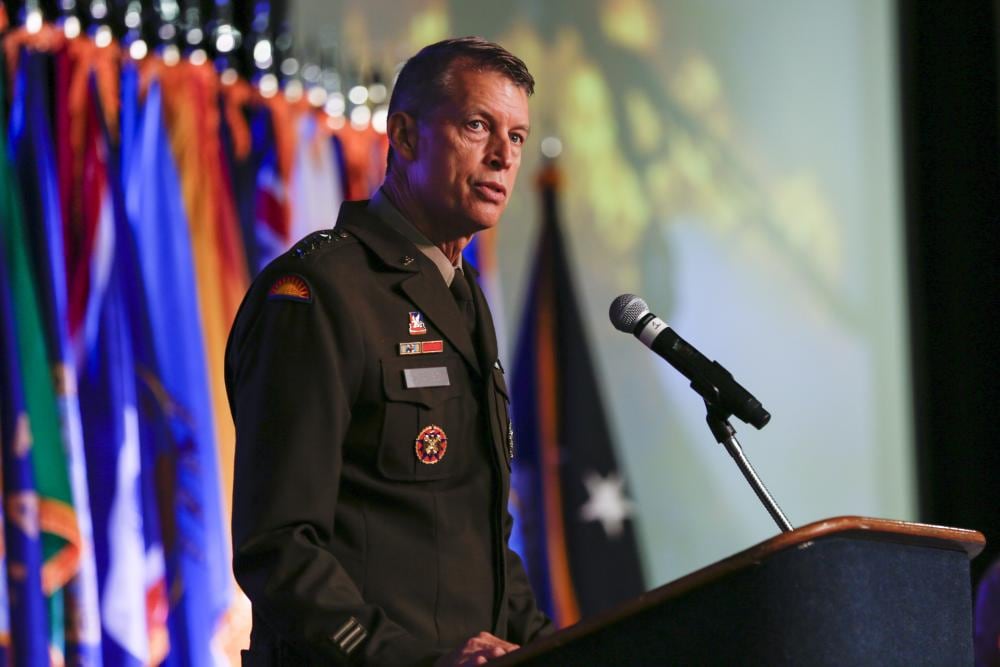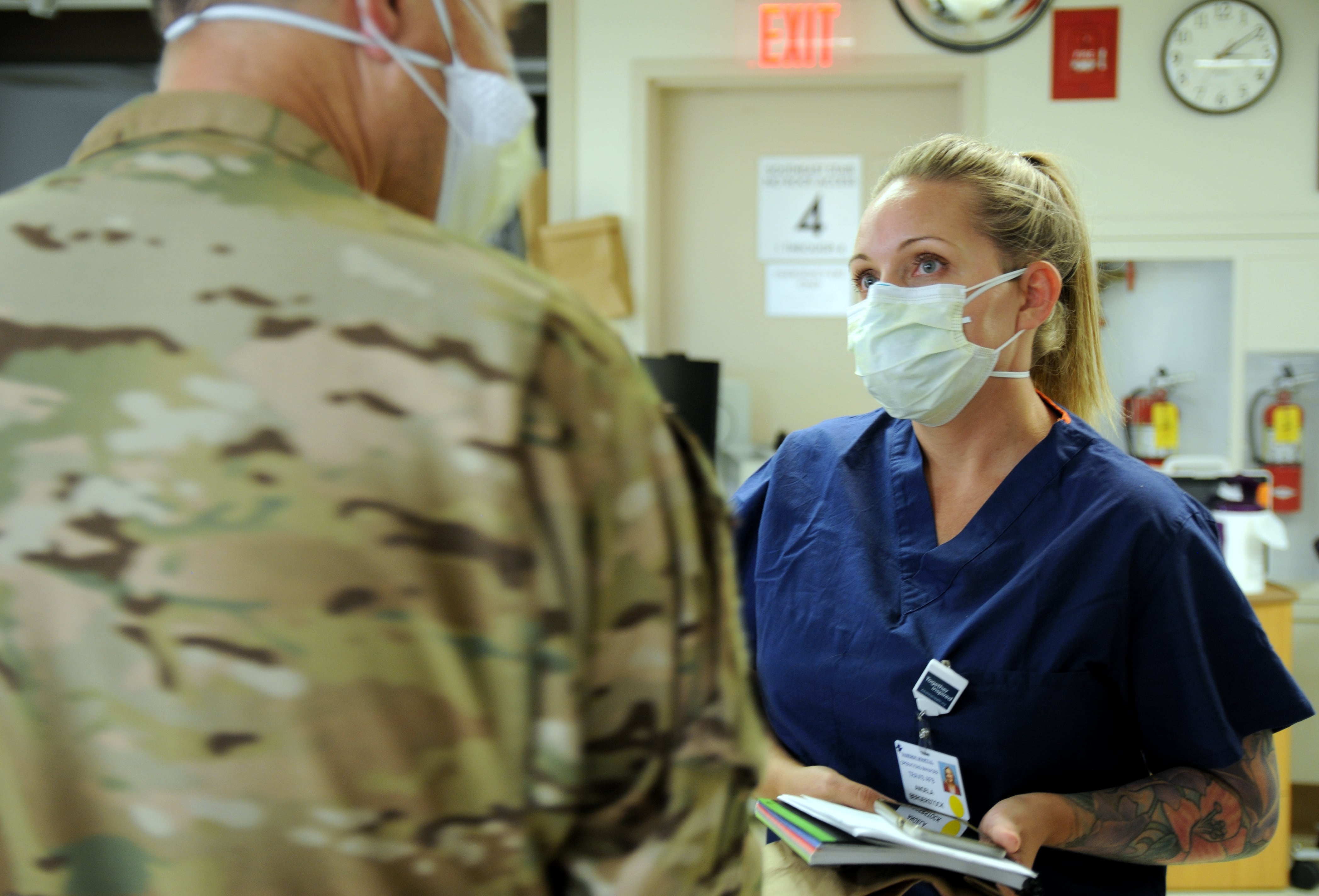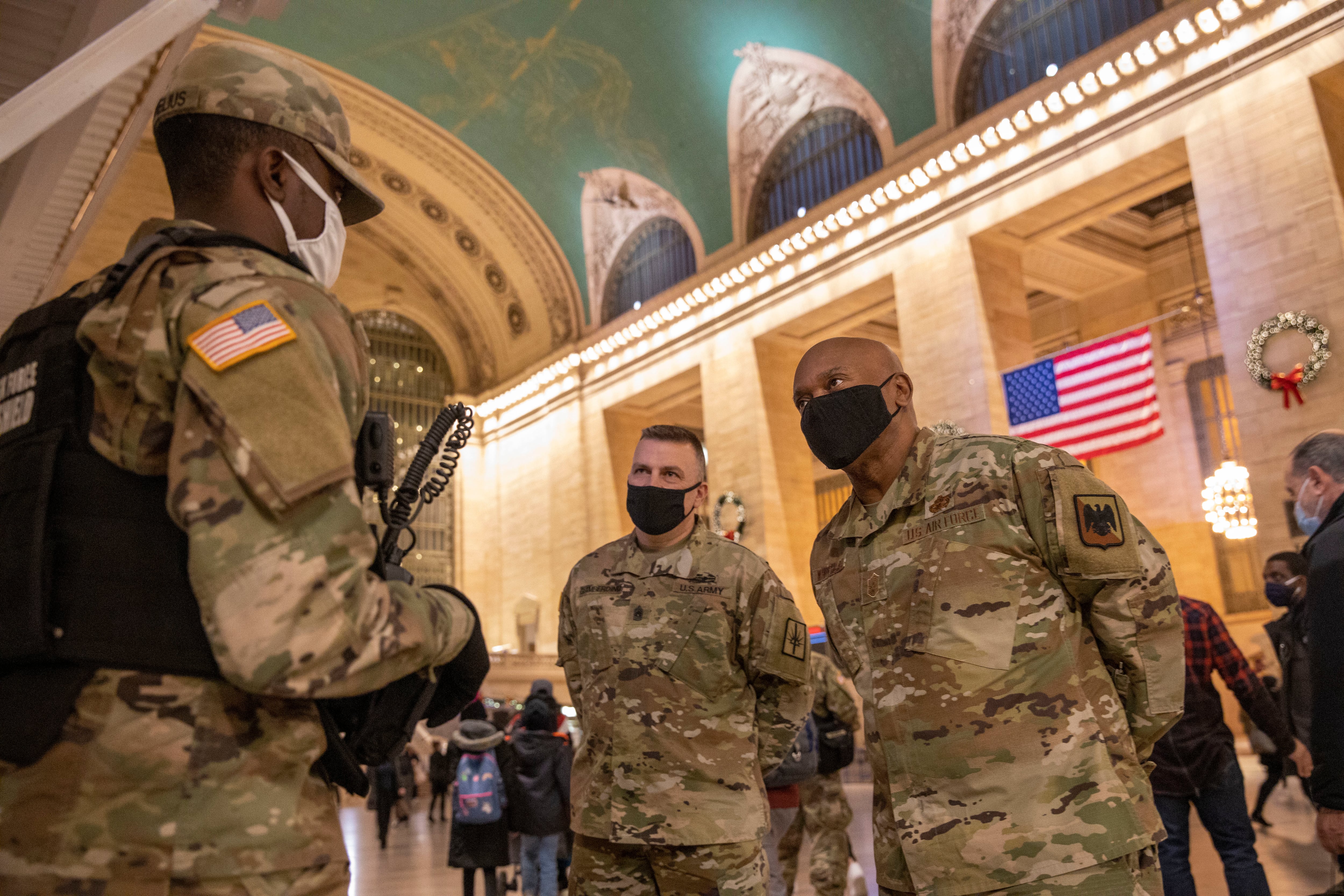ABOARD A C-40 MILITARY TRANSPORT JET—Halfway through his tenure in charge of the National Guard, Army Gen. Daniel Hokanson’s quest to get all Guardsmen year-round health insurance has stalled.
Hokanson, who took over as National Guard chief in 2020, has repeatedly raised the prospect of insuring the approximately 60,000 airmen and soldiers who rely on Tricare while activated, but aren’t otherwise covered by an employer, Medicaid or a private plan sold on the Affordable Care Act exchanges.
But the prospective cost of permanently adding those part-time Guardsmen to the Tricare rolls like their full-time counterparts, plus an untold number of dependents, remains elusive, he told Military Times in an exclusive interview during a trip to Arkansas on Monday.
RELATED

Providing basic Tricare insurance to those service members alone could cost the federal government upward of $700 million each year, he said. He cautioned that the figure is about a year old and doesn’t account for the recent spike in inflation.
The Guard, which makes up one-fifth of the Defense Department, argues it doesn’t have much wiggle room in its budget for higher insurance costs. But Hokanson said the benefits are worth figuring out a way to foot the bill, either through military appropriations or another avenue.
“What I want to do is give the families and the service members the stability and the belief that, ‘Hey, if I get injured or anything, I’m going to be healthy,’” Hokanson said. “The last thing we want is to get mobilized and then somebody say, ‘Hey, I’ve had this injury, but I haven’t had health insurance to get it addressed.’”
In that case, he said, everyone loses.
RELATED

It’s not a hypothetical situation: about 10% of the National Guard doesn’t meet the health requirements needed to deploy at any given time, Hokanson said. That’s largely because of musculoskeletal pain, cardiovascular disease and other chronic conditions.
“Sometimes it’s [that] they don’t have a dental exam, because a lot of people don’t have dental insurance,” he said. “Before a deployment, we’ll have dental vans come up and clear everybody really quickly.”
Still, the Guard wants to get ahead of any problems that could pop up at the last minute by encouraging routine checkups and continuous care. Congressional lawmakers are “very open” to finding a solution, Hokanson said.
“If somebody’s got an idea to leverage an existing program that makes it easier, I’m all for that,” he added.
Expanding Tricare to cover those new beneficiaries may not be the only solution, but it could make the most sense, said Carrie Farmer, a military health expert at the federally funded think tank Rand Corp.
RELATED

She noted that offering year-round Tricare coverage to part-time Guardsmen would make a patient’s care more consistent, and cut out the additional back-end costs that are incurred when one person toggles between multiple insurance plans.
Congress could expand the scope of who qualifies for health care through the Department of Veterans Affairs to include Guard and Reserve members, Farmer said. Or, the federal government could take the unusual step of creating a special subsidy for Guardsmen and Reserve troops to buy health insurance through an Affordable Care Act marketplace in their state.
Further still, the federal government could allow any Guardsman to enroll in Medicaid, regardless of their annual earnings, or incentivize private companies to cover uninsured employees who are in the Guard.
“Anything is possible,” Farmer said. “It’s not immediately clear that those costs through any of these other mechanisms are going to be less expensive than Tricare.”
RELATED

She encouraged more study on the topic so officials can better understand why uninsured Guardsmen lack health coverage and tailor their response accordingly.
A 2021 Institute for Defense Analyses report on medical readiness in the Reserve component, which includes the National Guard and Reserve, found that junior enlisted in the Army and Marine Corps comprise the bulk of the uninsured.
But broadening Tricare to cover inactive Guardsmen and Reservists would balloon health care costs by “several billion dollars” without guaranteeing a healthier force, the federally funded research corporation said.
“Providing a ‘premium-free Tricare Reserve Select’ or a ‘Tricare for All’ benefit to inactive [Reserve component service members] would not be a cost-effective way to address medical readiness,” the study found. “Rather than targeting the [non-medically ready] population and/or the uninsured, these options would offer a benefit to the entire … population and their dependents.”
A more targeted approach could waive Tricare Reserve Select premiums — the basic price someone pays for health coverage each month, not including the cost of care itself — for junior enlisted and their families only, the report said.
That could increase costs by up to about $750 million each year, compared to as much as $2.2 billion for offering free premiums to all enlisted Guardsmen, Reserve troops and their dependents.
Hokanson acknowledged he may not get his plan across the finish line by the time his four-year term expires in 2024.
In addition to his push to insure more of the force, he’s trying to get Guard pilots paid on par with their active duty counterparts for flight and training time. He also wants to provide pay, drill credit or points toward retirement to part-time Guardsmen who complete their mandatory military education requirements in their civilian time.
“Even in four years, you have a sense of urgency,” Hokanson said. “What I’m trying to do is build the foundation, so if I can’t accomplish it … the next person can get there.”
Rachel Cohen is the editor of Air Force Times. She joined the publication as its senior reporter in March 2021. Her work has appeared in the Washington Post, the Frederick News-Post (Md.), Air and Space Forces Magazine, Inside Defense, Inside Health Policy and elsewhere.








